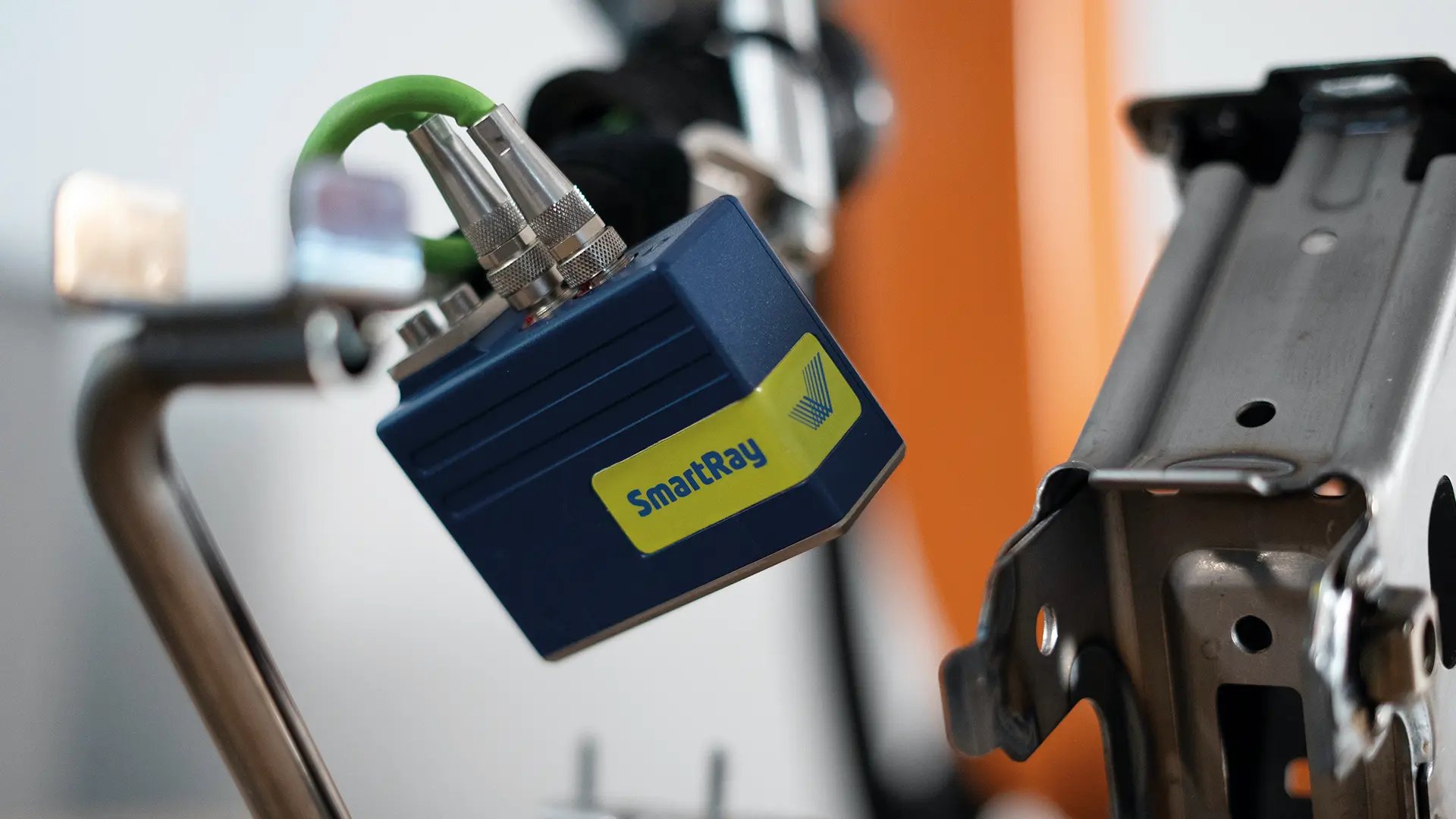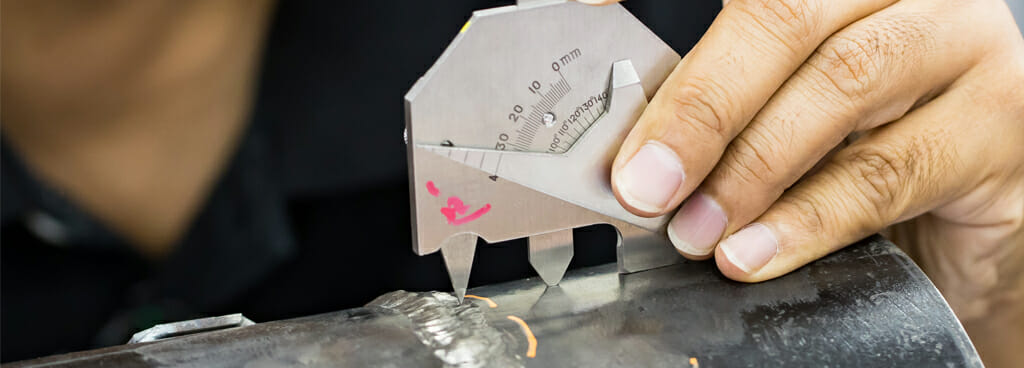Discovering Advanced Equipment and Approaches for Accurate Welding Evaluation
In the realm of welding evaluation, the quest of precision and integrity is extremely important, spurring the development of sophisticated devices and methodologies. Technologies such as phased range ultrasonic screening and electronic radiography are changing defect detection, supplying unparalleled precision in characterizing welding imperfections. Furthermore, laser scanning innovations and computerized inspection systems, outfitted with expert system, are redefining the landscape by reducing human mistake and improving security procedures. As these advanced techniques remain to develop, they guarantee not only to transform inspection practices yet additionally to raise fascinating concerns regarding the future of quality control in industrial applications.
Ultrasonic Evaluating Innovations
Ultrasonic testing advancements regularly stand for the center of advancements in welding inspection technologies. These developments have substantially improved the ability to identify and assess discontinuities within bonded structures, guaranteeing boosted integrity and security - Welding Inspection Madison. Ultrasonic screening utilizes high-frequency acoustic waves to penetrate materials, supplying in-depth details regarding interior features without causing damage. The most current growths in this field have actually focused on boosting accuracy, rate, and the capability to translate complex information.

Additionally, improvements in software application algorithms for data evaluation have actually improved the accuracy of problem detection and sizing. Automated ultrasonic testing systems currently supply high-resolution imaging, allowing comprehensive assessments of weld high quality. These systems are usually incorporated with innovative visualization devices, which promote the interpretation of results.
Radiographic Inspection Techniques
While ultrasonic testing developments have actually established a high criterion in non-destructive assessment, radiographic examination methods proceed to play an indispensable function in welding inspection by offering unique understandings into material honesty. Radiographic testing (RT) utilizes the usage of X-rays or gamma rays to permeate products, producing a radiograph that aesthetically represents the inner structure of a weld. This imaging capacity is indispensable for spotting subsurface issues such as porosity, inclusions, and cracks that may not be visible through surface assessments.
The procedure includes putting a radiation resource on one side of the weld and a detector on the opposite side. Variations in product thickness and density impact the attenuation of the rays, creating a different photo that exactly delineates defects. RT is particularly advantageous for inspecting thick sections and complex geometries where various other methods may fall brief.
Despite its effectiveness, radiographic assessment needs to be carried out with rigorous adherence to safety and security protocols due to the harmful nature of ionizing radiation. The analysis of radiographs calls for skilled personnel, as the high quality of the analysis straight affects the integrity of the inspection. Consequently, recurring developments in electronic radiography are improving photo clearness and interpretation efficiency, enhancing RT's crucial duty in making sure weld top quality.
Laser Scanning Breakthroughs
Accepting laser scanning modern technology in welding inspection has transformed the assessment of weld top quality and honesty. This advanced technique uses a non-contact, high-resolution ways of catching comprehensive 3D data of weld surface areas. Unlike traditional evaluation strategies, laser scanning supplies quick information acquisition, significantly boosting the performance and accuracy of weld assessments. The technology employs laser beams to produce exact 3D designs, which are necessary for extensive analysis of weld dimensions, surface abnormalities, and possible problems.
Laser scanning advances have actually caused substantial renovations in discovering and defining surface imperfections such as porosity, lack of fusion, and undercuts. The high-resolution data enables inspectors to execute extensive analyses, guaranteeing that welds satisfy rigorous sector standards. This method supports the development of electronic documents, promoting lasting quality guarantee and traceability.
Additionally, laser scanning innovation integrates perfectly with software application services created for automated flaw discovery and assessment. The resultant data can be conveniently shared and reviewed, advertising joint decision-making procedures. As markets continue to require greater criteria for weld quality, laser scanning remains at the forefront, using unmatched accuracy and efficiency in welding inspection.
Automated Inspection Equipments

Automated assessment systems use the benefit of consistency, getting rid of human error and subjectivity from the examination process. They are made to run in various settings, from production floors to remote field sites, making sure comprehensive insurance coverage. Welding Inspection Madison. These systems can be set to follow details welding criteria and requirements, giving thorough reports and documents for quality assurance purposes
Furthermore, the integration of cloud-based systems helps with the storage and evaluation of vast quantities of assessment information. This enables pattern analysis and anticipating upkeep, enabling makers to resolve prospective problems prior to they intensify. The fostering of automated examination systems is a pivotal action you could try this out towards boosting the reliability and performance of welding processes in commercial applications.

Enhancing Security and Efficiency
A substantial aspect of improving safety and security and performance in welding assessment depends on the integration of cutting-edge modern technologies that improve procedures and reduce dangers. The adoption of advanced non-destructive screening (NDT) approaches, such as ultrasonic testing, phased range ultrasonic testing (PAUT), and radiographic testing, plays a critical role in making certain architectural stability without compromising the security reference of the workers entailed. These techniques enable for thorough inspections with minimal downtime, reducing potential threats connected with traditional approaches.
Moreover, the execution of real-time data analytics and equipment knowing formulas has actually transformed the means evaluation information is translated. By using anticipating analytics, potential issues can be identified prior to they show up right into crucial failings, making certain timely interventions and maintenance. This proactive strategy dramatically boosts functional performance and security in welding procedures.
Moreover, remote examination innovations, consisting of drones and robot spiders equipped with high-resolution video cameras, allow assessors to analyze hard-to-reach areas without revealing them to unsafe conditions. This not just enhances assessment accuracy but also decreases human threat. By leveraging these innovative devices and approaches, markets can accomplish greater safety requirements and functional performance, inevitably bring about even more lasting and reputable welding examination techniques.
Conclusion
The assimilation of advanced tools and approaches in welding evaluation considerably enhances flaw detection and makes sure architectural integrity. These improvements not only enhance inspection performance but also add to boosted safety and security and top quality guarantee in industrial welding applications.

Ultrasonic testing advancements frequently represent the center of improvements in welding evaluation modern technologies.While ultrasonic testing technologies have established a high standard in non-destructive evaluation, radiographic examination strategies proceed to play an essential function in welding inspection by providing distinct insights into product stability.Welcoming laser scanning innovation in welding evaluation has actually changed the evaluation of weld quality and integrity. As markets proceed to require higher requirements for weld quality, laser scanning stays at the forefront, using unrivaled accuracy and effectiveness in welding inspection.
Automated examination systems offer the benefit of uniformity, getting rid of human error and subjectivity from the evaluation process.